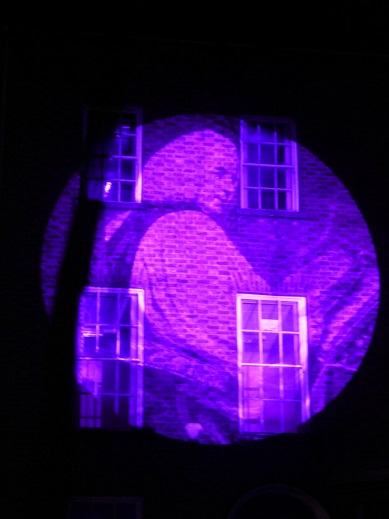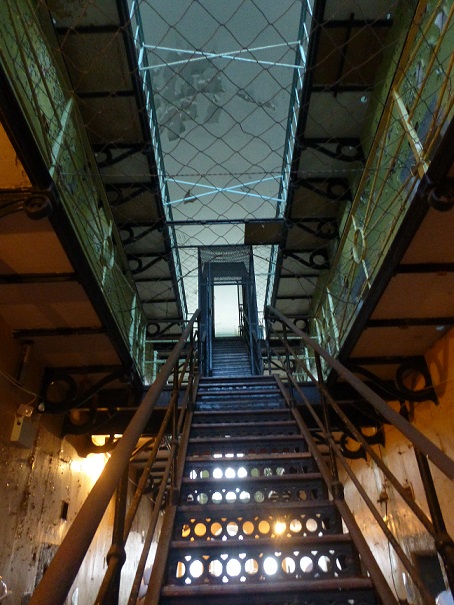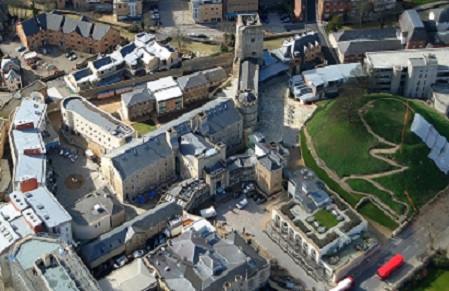ARMAGH GAOL. The challenge of reusing old prisons (Part 1)
Edited on
22 December 2017"New twists in old sites, fresh ingredients in a historical melting pot"
Tourism Development and Marketing Strategy and Action Plan till 2022


This is an article produced after the celebration of a transnational meeting hosted by the city of Armagh in the framework of activities developed in the INT-HERIT Project. Public & private partnership, pilgrims, prisoners, paths...are some PPP words, situated at the core of a living lab in which participants at the meeting were invited to interact with local stakeholders. All of that surrounded by the atmosphere of the Georgian Festival, an annual event that celebrates the foundational sense of place, with the ubiquitous Archbishop Robinson as a witness.
Armagh, an microcosm of Ireland

At his arrival the visitor can feel a bit disoriented with the generous presence of monuments and sites - two Cathedrals, Palace, Library, Observatory, Court House, Gaol ...- Besides, they are in some way diluted between roads that section this small city in many fragments. A city which contains much of the history of Northern Ireland.
The first thing that a traveller could aspire to find would be an unequivocal sign about his position and probably a pedestrian path to walk while enjoying a large number of prominent buildings, not only monuments, but also houses built in the Georgian era. An old map and a relevant guide - The buildings of Armagh. Ulster Architectural Heritage Society- can help visitors to satisfactory find their way in the city.
The urban challenge faced by the city of Armagh, recently grouped in a new administrative format - Armagh City, Banbridge and Craigavon Borough Council – is precisely maintaining the historical fabric built in the center, preserving and rescuing its identity and character, truly original. The city is trying to recover the compact character of the urban area, sewing the fragmented parts after the construction of various roads in the 1960s. Together with the private buildings whose conservation and recovery is being undertaken through a Master Plan, a specific space is attracting the attention of the city's political and technical leaders. This is the old prison, closed since the year 1986, owned by the city and the object of a proposal for rehabilitation with a double use as a hotel and a residential area. This is the topic that focused the recent work visit from the partners of the INT-HERIT project.
In a deep sense, in Armagh one finds the weight of a centre of power, acting as developer of churches, houses, civil and social sites, prisons, all of them considered as drivers of the city and all structuring the territorial economy as it was in times past. That investment period moved the city to a central position, and even today the story and the history, the beauty of the place, the artistic and philosophical meaning, continue showing this capacity to appeal the new generations. However, how can these sites be preserved, renovated and used? How can they negotiate and with whom the recovery of the lost centrality?
Armagh Gaol

The Gaol which is Grade B+ listed, was largely designed by two of Ireland’s most renowned architects, Francis Cooley and William Murray. The construction of the prison began in the 1780’s and it was the primary women's prison in Northern Ireland until its closure.
Armagh Gaol consisted of three prisons – one for women, one for debtors and one for felons. Executions were common, taking place in the Gaol square, but were later moved behind the prison walls. In the latter half of the 20th century, the Gaol accommodated high-profile political prisoners. It closed in 1986 and now the impressive site is on the Built Heritage at Risk list.

A process aimed to ensure the safeguarding and the reuse of the prison was started around ten years ago. A cross-sector partnership was created and was very active from 2009 to 2011 when Armagh city also collaborated with The Prince’s Regeneration Trust. They held a community consultation event to present different ideas to key stakeholders and the local community. The attendees provided several suggestions that were incorporated into the plans. At the end of the process the partnership had completed a conservation management plan, an action plan for the project and started to work on a business plan to create a Heritage Centre at the site, according to the information provided by the Prince's Regeneration Trust website.
The redevelopment of the site by the private actor involved, the Osborne Group, proposed a mixed use development that would bring economic benefits to Armagh and the wider Borough – employment, training and increased visitor numbers and spending. Osborne Group has a proven track record in heritage regeneration schemes, including the rehabilitation of the Castle and the old Gaol in Oxford, this one transformed later into a luxury Hotel.
The developer's proposal contains the following key features: 4 star hotel with 80 rooms; Spa and treatment rooms, restaurant, conference and banqueting with facilities for 250 people; Heritage Centre and attraction space; 22 residential apartments and 10,000 square feet retail space.
The estimated total cost of the project is circa £ 25m and the estimated private sector funding circa £ 11m, it being therefore necessary to explore and secure public investment options close to 14 million pounds.

Continue in Part 2 - Please keep reading
 Submitted by Antonio Zafra on
Submitted by Antonio Zafra on
